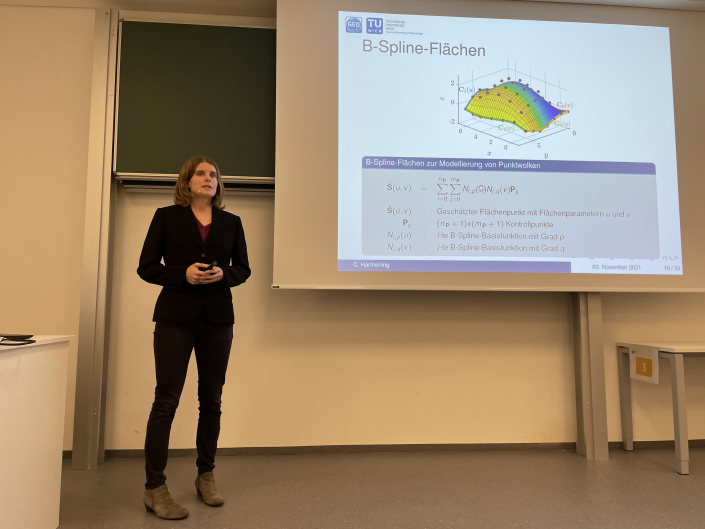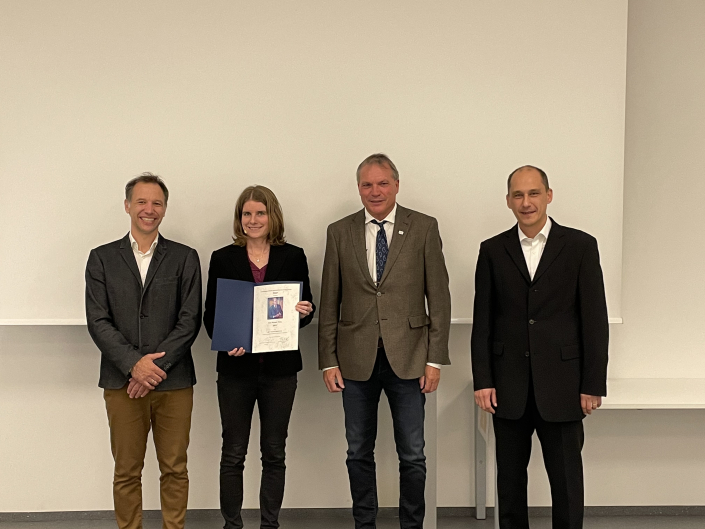Karl Rinner Price 2020
The awarding ceremony took place on November 3, 2020, at the Technische Universität Wien (TU Wien). About 25 guest joined the ceremony in person at TU Wien while another 25 guest joining via an online video cast due to Covid19 restrictions. The ladator speech was given by Univ.Prof. Dr. Hans Neuner. The president of the ÖGK Univ.Prof. Dr. Werner Lienhart presented the award and DI Christian Lidl of the Bundeskammer der ZiviltechnikerInnen handed over the price cheque.
After the ceremony Dr. Harmening presented her research topic: A spatio-temporal deformation model for laser scanning point clouds.
- Curriculum Vitae
- Publication: Harmening, C., Neuner, H. A spatio-temporal deformation model for laser scanning point clouds. J Geod 94, 26 (2020). https://doi.org/10.1007/s00190-020-01352-0 (open access article)
- Video of the awarding ceremony and Dr. Harmening’s talk on the OVG YouTube channel
Abstract:
A spatio-temporal deformation model for laser scanning point clouds
The establishment of the terrestrial laser scanner changed the analysis strategies in engineering geodesy from point-wise approaches to areal ones. During recent years, a multitude of developments regarding a laser scanner-based geometric state description were made. However, the areal deformation analysis still represents a challenge. In this paper, a spatio-temporal deformation model is developed, combining the estimation of B-spline surfaces with the stochastic modelling of deformations. The approach’s main idea is to model the acquired measuring object by means of three parts, similar to a least squares collocation: a deterministic trend, representing the undistorted object, a stochastic signal, describing a locally homogeneous deformation process, and the measuring noise, accounting for uncertainties caused by the measuring process. Due to the stochastic modelling of the deformations in the form of distance-depending variograms, the challenge of defining identical points within two measuring epochs is overcome. Based on the geodetic datum defined by the initial trend surface, a point-to-surface- and a point-to-point-comparison of the acquired data sets is possible, resulting in interpretable and meaningful deformation metrics. Furthermore, following the basic ideas of a least squares collocation, the deformation model allows a time-related space-continuous description as well as a space- and time-continuous prediction of the deformation. The developed approach is validated using simulated data sets, and the respective results are analysed and compared with respect to nominal surfaces.




